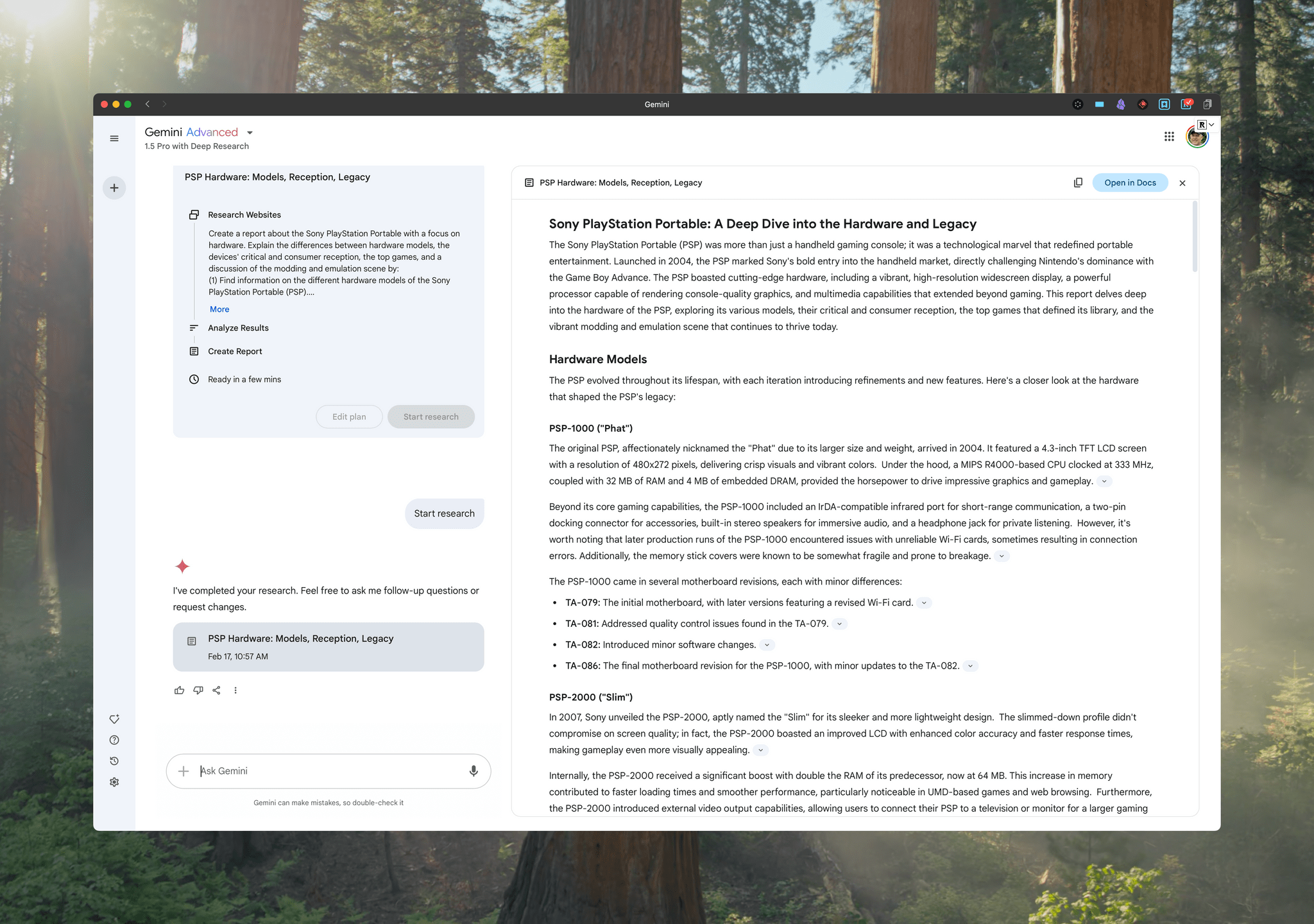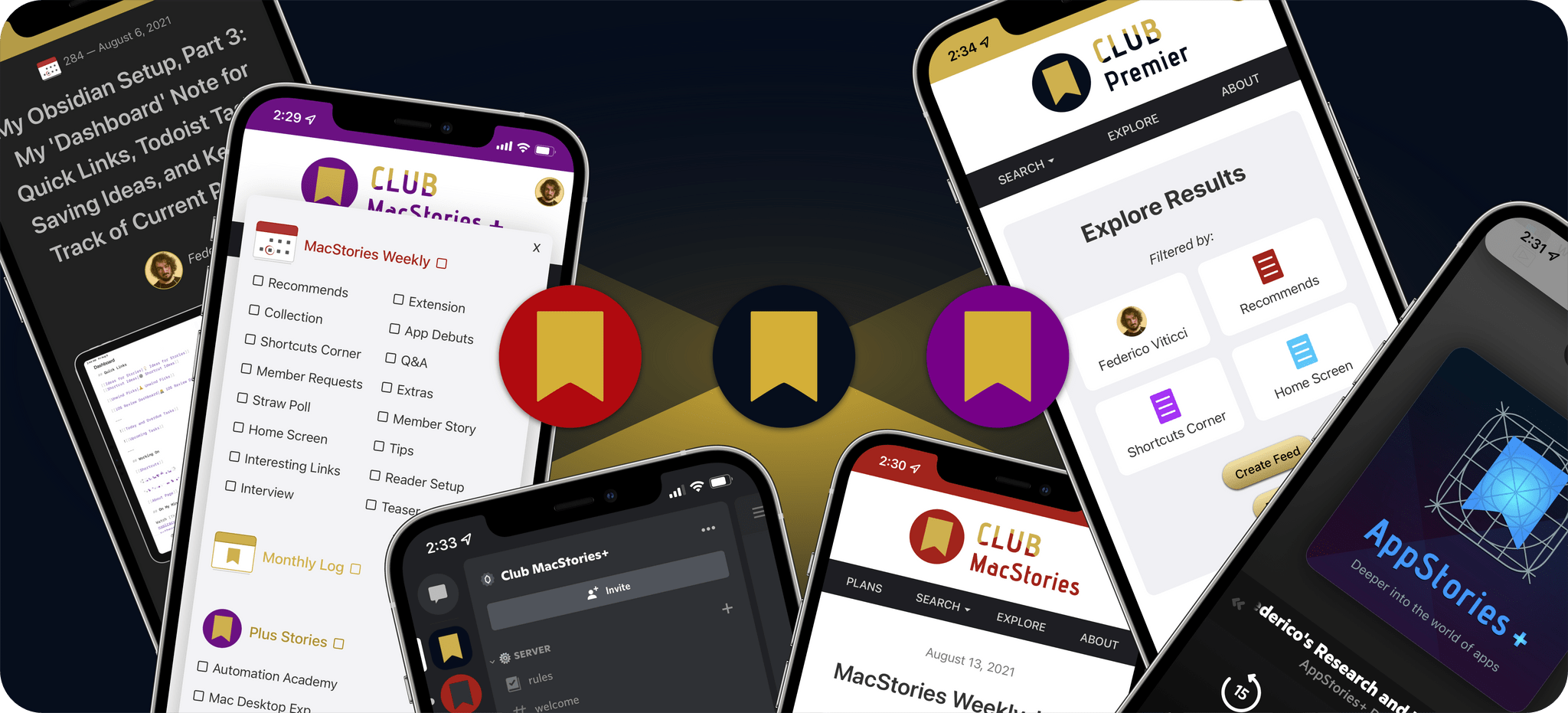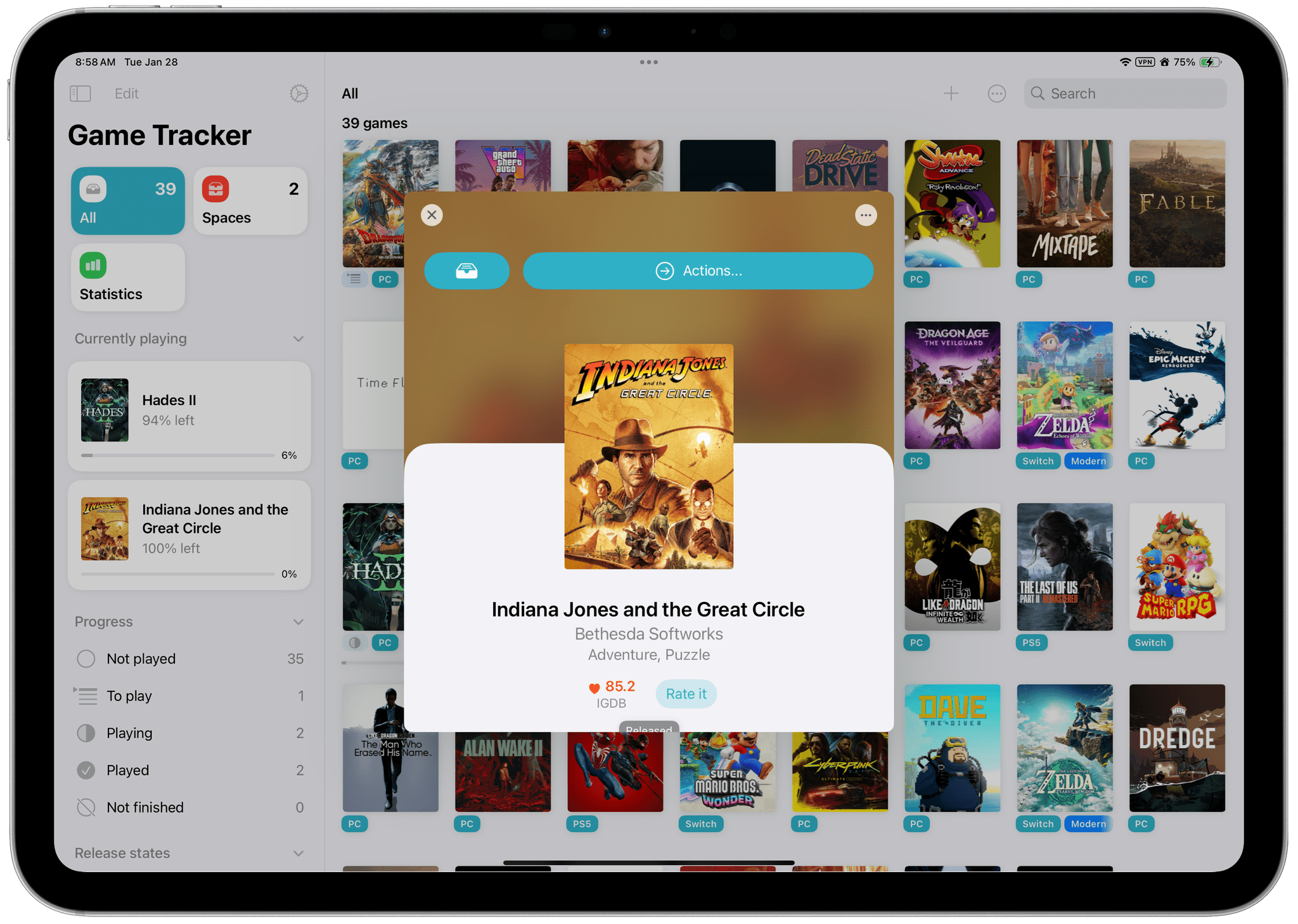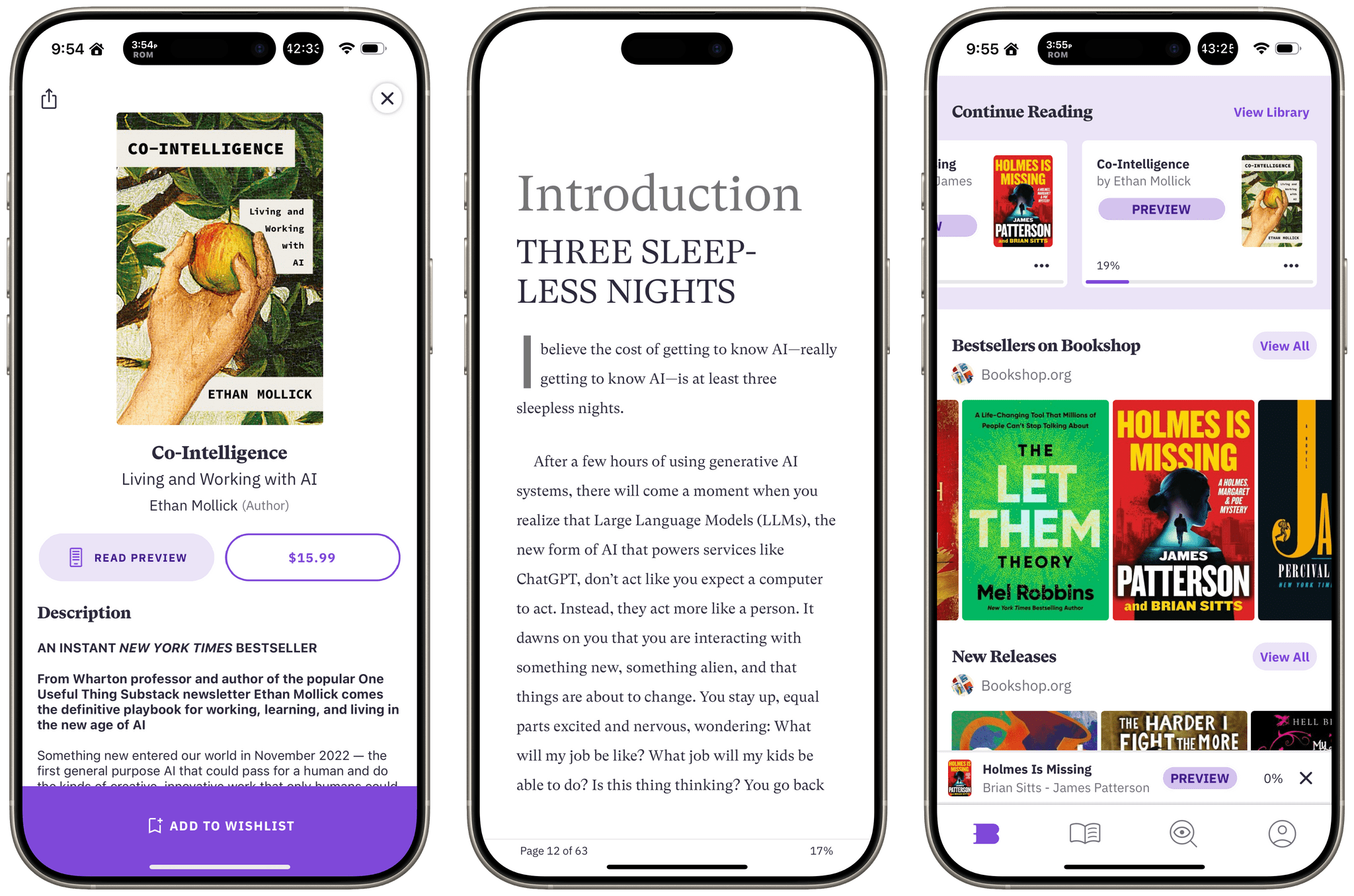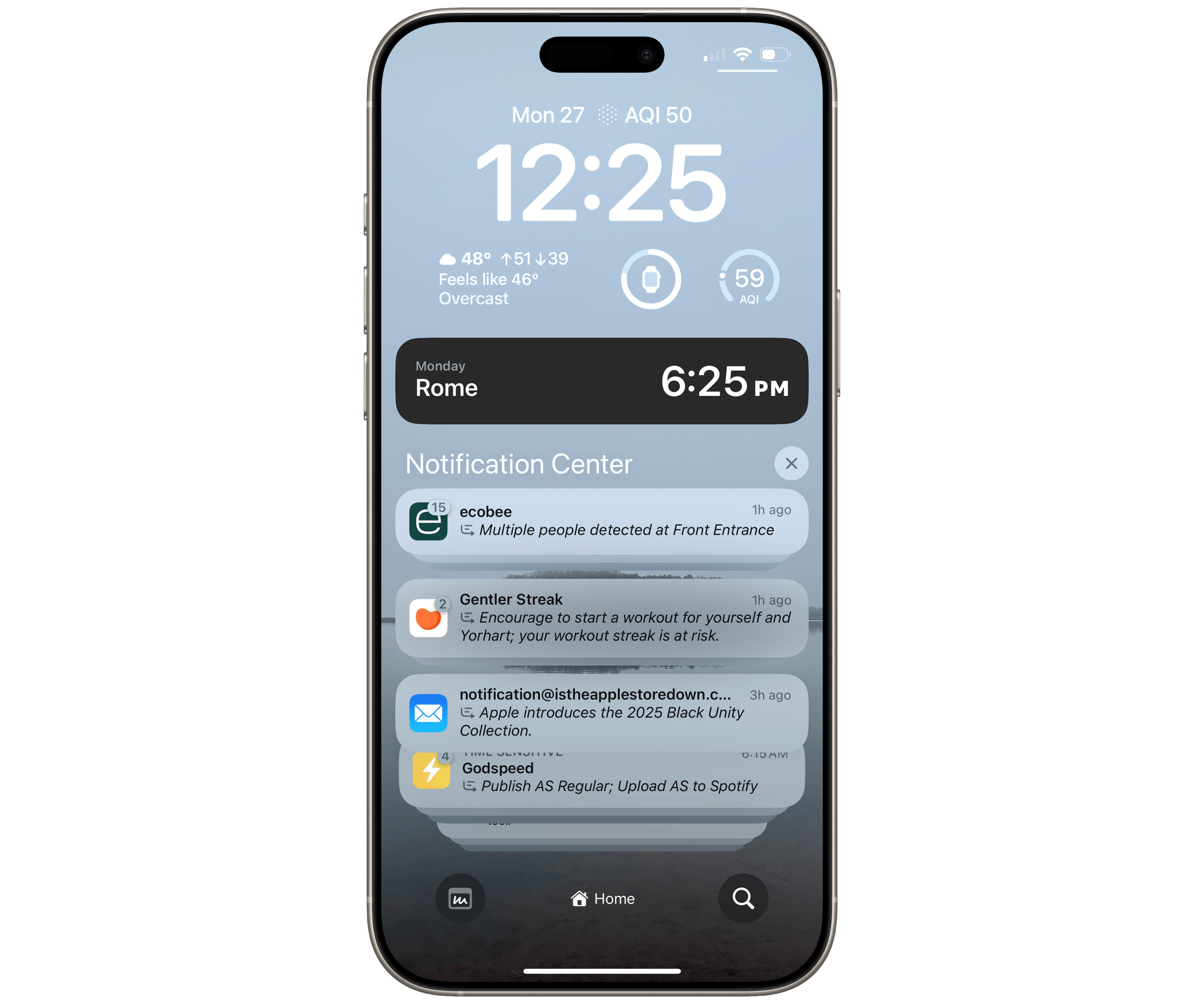Today is Pokémon Day, and, as they do every year, The Pokémon Company held a Pokémon Presents keynote showcasing the latest updates coming to their slate of titles, including a gameplay reveal for the upcoming Pokémon Legends: Z-A for Nintendo Switch.
Posts tagged with "iOS"
With Pokémon Champions, Competitive Pokémon ‘VGC’ May Finally Go Mainstream
Recipes Are Coming to Apple’s News+ Service
Apple continues to layer new features into its News+ service. With iOS and iPadOS 18.4, the company says the service will add recipes from well-known publishers including Allrecipes, Bon Appétit, Food & Wine, Good Food, and Serious Eats:
With the new Food feature, users will be able to find stories curated by Apple News editors, as well as browse, search, and filter tens of thousands of recipes in the Recipe Catalog — with new recipes added every day. The beautifully designed recipe format makes it easy to review ingredients and directions, and a new cook mode takes step-by-step instructions to the full screen. Users can also save their favorite recipes for later and access them offline.
Interestingly, Apple’s press release makes no mention of the Mac. I’d rather use my iPhone or iPad in the kitchen, but a Mac is a great place to browse recipes, so hopefully News+ Food will be brought to the Mac eventually.
My Latest Mac Hacks Column: Using Google Gemini with Read-Later and Listen-Later Services for Research→
Yesterday, I published the latest installment of my Mac Hacks column, an exclusive perk of Club MacStories+ and Club Premier, covering how I use Google Gemini combined with read- and listen-later services to do preliminary research for projects.
What started as a way to reduce distractions when doing research with the help of Google Gemini quickly evolved into something more. As I explain in the conclusion:
The result of this workflow is that I can generate a Gemini report for an ongoing project and then read it at my leisure somewhere other than at my desk, whether I’m using my laptop, an iPad, or an e-ink device. I also have the option of heading out to my local coffee shop for a change of scenery and listening to a report as I walk. On a busy day, it’s a nice way to get some exercise and knock out some research at the same time. That flexibility, combined with fewer up-front distractions, has proven to be a great productivity boost.
Research is a universal task that touches every sort of project. It’s also a place where it’s easy to get bogged down. If you’re interested in streamlining the process, don’t miss the latest Mac Hacks.
Mac Hacks is just one of many perks that Club MacStories+ and Club Premier members enjoy, which also include:
- weekly and monthly newsletters,
- a sophisticated web app with search and filtering tools to navigate eight years of content,
- customizable RSS feeds,
- bonus columns,
- an early and ad-free version of MacStories Unwind, our Internet culture and media podcast,
- a vibrant Discord community of smart app and automation fans who trade a wealth of tips and discoveries every day, and
- live Discord audio events after Apple events and at other times of the year.
On top of that, Club Premier members get AppStories+, an extended, ad-free version of our flagship podcast that we deliver early every week in high-bitrate audio.
Use the buttons below to learn more and sign up for Club MacStories+ or Club Premier.
Join Club MacStories+:
Join Club Premier:
Game Tracker: A Powerful App to Track, Organize, and Customize Your Videogame Library
Game Tracker is a new videogame tracking app for iPhone, iPad, and Mac from Simone Montalto, who is probably best known to MacStories readers for developing the excellent Book Tracker. In fact, Montalto has created an entire suite of tracking apps that also includes Movie Tracker, Music Tracker, and Habit Tracker. That experience with various tracking apps shows with Game Tracker, which does a fantastic job of tailoring to the particularities of videogames and leveraging metadata to allow users to make the app their own.
Let’s take a closer look.
Bookshop.org Now Supports Local Booksellers with eBook Sales→
Bookshop.org launched in 2020 as a way to sell books online while still supporting local bookstores, which have become a rarity in the U.S. The company has seen success selling physical books online. As Boone Ashworth explains at Wired:
For physical books, Bookshop lets buyers direct 30 percent of the proceeds of a sale to their favorite participating bookstore. An additional 10 percent of those sales, plus the sales of books that are not earmarked for a specific store, gets split up and distributed to every store on Bookshop’s platform.
Now, Bookshop has added eBooks that can be purchased online and read in the company’s new Bookshop.org app, available for iPhone, iPad, and Android devices. Ashworth breaks down how these sales work:
Ebook sales through Bookshop, however, will see 100 percent of the proceeds going to the store that sells them through the platform. If a user buys an ebook directly from Bookshop without naming a bookstore they want to support, then a third of that profit will go into the pool of funds that gets divided between stores. The rest will go to pay for Bookshop.org’s engineers and server costs.
Giving local bookstores the ability to sell eBooks fills a big hole for those businesses. Bookshop CEO Andy Hunter shared the company’s motivation for offering eBooks with Wired:
“It’s crazy that bookstores can’t sell ebooks to their customers right now,” Hunter says. He says he wants this program to continue his company’s mission of propping up local bookstores, but he also hopes this move will help take Amazon down a peg as well.
I’ve tried Bookshop’s app briefly with some book previews, and it works well. The settings options aren’t as extensive as in other eBook readers, but the basics – like text size, pagination versus scrolling, a couple of font options, and light, dark, and paper themes – are all there. The design makes browsing your library of books or finding something new to read easy, too. It may not be enough for some readers, but this is a 1.0 release, so I’m optimistic additional options will be offered with time.
It’s great to see Bookshop offering eBooks. We have an excellent bookstore here in Davidson that I love to browse, but more often than not, I prefer an eBook over the paper version, so it’s nice to have that as an option now.
The Bookshop.org app is available on the App Store as a free download. eBooks must be purchased online and synced with the app.
iOS and iPadOS 18.3 Tweak Apple Intelligence and Add a Few Features
The drip, drip, drip of Apple Intelligence continues with iOS and iPadOS 18.3. There are still some big-ticket features announced at WWDC 2024 that are yet to come, but with today’s release, Apple keeps ticking items off its list.
The biggest change is one that is largely hidden from view. Starting with iOS and iPadOS 18.3, Apple Intelligence is turned on by default. That should result in greater adoption of the features, and it’s a good indicator that Apple is confident LLM hallucinations won’t come back to bite the company in its reputation. We’ll see about that last bit, but given the size of the iPhone market, Apple’s guardrails have held up reasonably well so far.
That said, Apple is walking back one feature a little. Notification summaries will no longer be applied to news apps, after some high-profile confabulations. Given that news apps typically send headlines, which are inherently summary in nature, I don’t think that’s a great loss, although the change is reportedly temporary. However, one change to notifications is not temporary: starting with iOS and iPadOS 18.3, summarized notifications appear in italics to help distinguish them from other notifications.
Visual Intelligence has been updated in iOS 18.3 as well. Accessed by pressing and holding the iPhone’s Camera Control, Visual Intelligence can now add events to your calendar, identify animals and plants, and get information about places around you, such as a store or restaurant’s hours.
The latest update also adds back a Calculator feature. When you tap the equals sign repeatedly, the Calculator app will apply the last-used operation each time.
Finally, Apple introduced its latest Black Unity Collection earlier today. The iPhone and iPad wallpapers are part of iOS and iPadOS 18.3, and the new Unity Rhythm watch face is included with watchOS 11.3.
Netflix Games Seemingly Narrows Its Focus→
I’ve followed Netflix Games’ journey closely for the last three years. The company has dipped its toe into a wide variety of genres but stood out for its deep catalog of artistic indie games, including recent additions like Monument Valley 3. However, based on an earnings call reported on by Neil Long of mobilegamer.biz, that may be changing.
According to Long, Netflix co-CEO Greg Peters said:
After three years of releasing a broad range of mobile titles, Netflix said it is now focusing on “a few key genres”, including narrative games based on its own IP, party games, kids games and “mainstream established titles (like Grand Theft Auto)”.
From that, it sure sounds like indie games are being squeezed out at Netflix Games, which has seen its fair share of upheaval recently. I hope not though. Having high-quality indie titles on my iPhone that are also available on my Ayn Odin Android portable console has been a delight.
A Tiny But Exciting CES Smartphone Controller Discovery→
One of my favorite surprises during CES 2025 so far was when Brendon pointed to a small device sitting on a table at the GameSir booth and asked ‘What’s that?’ It turns out it was a prototype Game Boy-style smartphone controller that doubles as a battery pack. As Brendon explained on Wavelengths yesterday:
GameSir’s concept is brilliant in that it’s a completely new form-factor for a mobile controllers, but also (though I didn’t confirm this) appears to be the kind of design that could work across both iPhone and Android devices. Even in my brief time messing around with it, the buttons and d-pad felt great, the shoulder buttons allowed for a pretty natural shelf for resting your hand on top of (similar to the Trim-UI Brick), and overall I left the booth blown away by it.
From our conversations with GameSir, it looks like a Kickstarter campaign is in the works and the device could be shipped in the first half of 2025. With emulators available on the iPhone since last summer, we’ve begun seeing more innovative controller solutions on smartphones, which I love. Be sure to check out Brendon’s story on Wavelengths for more photos of the GameSir prototype and his thoughts on it.
Lux Reveals Plans for Halide Mark III→
Yesterday, the team at Lux announced that they are working on the next major release of their pro camera app, Halide, which will be dubbed Halide Mark III. The next iteration of Halide, which Lux hopes to release in 2025 will focus on three areas:
- Color Grades: Like Kino, their App Store iPhone App of the Year for shooting video, Lux plans to add custom color grading to Halide.
- HDR: Lux is developing its own implementation of High Dynamic Range that will give Halide’s photos “a thoughtful and nuanced HDR look.”
- Redesign: Although Lux has not revealed any details, Halide will be redesigned, which should include a focus on color grading.
In addition to upcoming features, Lux announced a new community Discord for Halide and Kino, to collect feedback from customers and to allow them to share their interest in photography. The Discord and social media will also be where users can participate in the Halide and Kino 52-Week Challenge:
Every week you’ll get a photography challenge on our Discord. We’ll also include resources to help with the challenge — like app-specific tips. The challenge will be shared there and on our social media. Once you’ve got your shot, you can share your shots and see what the rest of the community came up with.
I love both Halide and Kino, and I’m intrigued by Lux’s new approach to development. Running a community can be challenging, but I expect the feedback Lux gets from users will be invaluable, as they work on the next big update to one of the App Store’s best camera apps.





